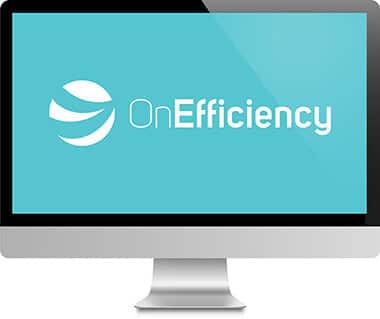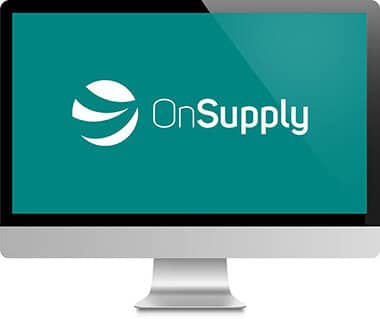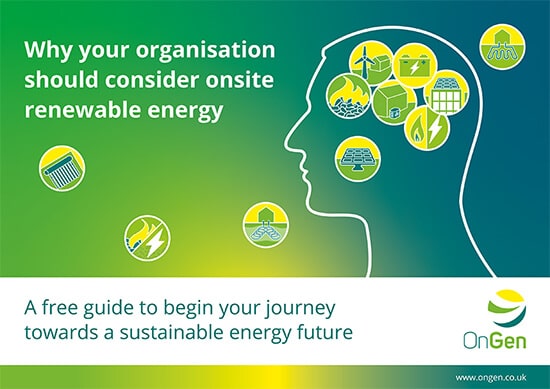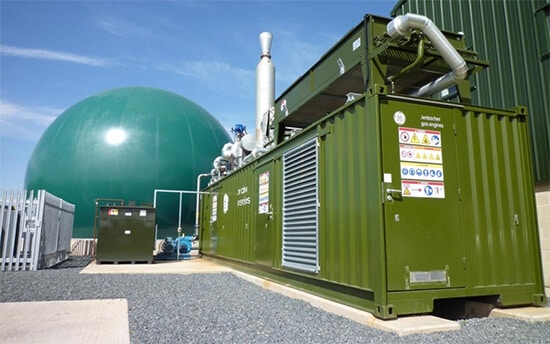Onshore Wind Turbine

What is Onshore Wind?
Onshore wind turbines are a renewable energy source that harness the kinetic energy of moving air to generate electricity. The output depends on the strength of the wind, the size of the blades, their height above the ground, topography and the proximity of buildings.
How do Onshore Wind Turbines work?
Turbine blades are designed to rotate when they are hit by the wind. Typical turbines will start rotating at a wind speed of 3-5 meters per second, the equivalent of a gentle breeze. The rotation of the blades turns a shaft in the nacelle, the box-like structure at the top of the turbine, and this enables a generator inside the nacelle to convert the kinetic energy of the wind into electrical energy. The electrical energy is then passed through a transformer, increasing the voltage and enabling it to be transported on the National Grid or used nearby. All wind turbines use the same mechanics to generate renewable electricity. A micro turbine located onsite and installed for local generation will have the same operation mechanics as a large scale turbine farm located onshore or offshore.
How can Onshore Wind Turbines be applied onsite?
After the desktop feasibility stage, monitoring the onsite wind potential is essential. This includes determining important factors such as the exact annual average wind speed and the turbulence intensity. This ensures the optimum turbine can be installed to ensure long term, reliable and successful operation.
The average wind speed at the site of installation is naturally a very important factor in the viability of a wind turbine. Sites where the average wind speed exceeds 6m/s (13.4mph) are likely to be most suitable. Turbines are classified according to the average wind speed they are designed to operate in. A wind speed classification of 3 for instance is designed to run at lower speeds. They have large rotors to capture as much energy as possible from lower wind speeds. A turbine with a wind speed classification of 1 is designed for higher wind speeds and typically will have shorter blades to handle the increased loads, they are usually more expensive.
Wind turbines can be controversial in some locations and engagement with the planning authorities and local communities at an early stage is recommended. Obtaining planning for wind turbine developments can be complex and OnGen’s team are well placed to help with this process.
Other factors that need to be considered in determining the suitability of a site for wind generation include the proximity to sensitive areas such as residential settlements, airports and environmentally sensitive locations. Detailed surveys are often required by the planning authorities to understand the impact on landscape designations, ornithology and the potential impact of noise. Visual impact can also be a common area of contention. Many of the impacts associated with wind turbines can be mitigated through careful design in co-ordination with stakeholder engagement and survey research to support the impact assessment report.
The average wind speed at the site of installation is naturally a very important factor in the viability of a wind turbine. Sites where the average wind speed exceeds 6m/s (13.4mph) are likely to be most suitable. Turbines are classified according to the average wind speed they are designed to operate in. A wind speed classification of 3 for instance is designed to run at lower speeds. They have large rotors to capture as much energy as possible from lower wind speeds. A turbine with a wind speed classification of 1 is designed for higher wind speeds and typically will have shorter blades to handle the increased loads, they are usually more expensive.
Wind turbines can be controversial in some locations and engagement with the planning authorities and local communities at an early stage is recommended. Obtaining planning for wind turbine developments can be complex and OnGen’s team are well placed to help with this process.
Other factors that need to be considered in determining the suitability of a site for wind generation include the proximity to sensitive areas such as residential settlements, airports and environmentally sensitive locations. Detailed surveys are often required by the planning authorities to understand the impact on landscape designations, ornithology and the potential impact of noise. Visual impact can also be a common area of contention. Many of the impacts associated with wind turbines can be mitigated through careful design in co-ordination with stakeholder engagement and survey research to support the impact assessment report.
The three-step process to net zero energy
OnGen offers a three-step process through OnGen Expert, OnEfficiency & OnSupply. Steps can be done holistically or separately.

Step 1:
Reduce energy consumption:
With OnEfficiency, we can help you identify where and what you can do to reduce energy consumption and improve energy efficiency.
By becoming more energy efficient, carbon emissions for your organisation will begin to reduce, along with the cost of energy.
By becoming more energy efficient, carbon emissions for your organisation will begin to reduce, along with the cost of energy.

Step 2:
Consider onsite renewable energy and battery storage:
With the OnGen Expert, we can help you explore the feasibility of generating and storing your own energy via a range of onsite renewable energy generation sources, like solar PV and heat pumps.
Switching to generating renewable energy onsite reduces the demand for grid-supplied energy, lowering the cost of energy bills, gaining resilience to grid fluctuations and reducing carbon emissions.
Switching to generating renewable energy onsite reduces the demand for grid-supplied energy, lowering the cost of energy bills, gaining resilience to grid fluctuations and reducing carbon emissions.

Step 3:
Switch to zero-carbon energy suppliers:
With OnSupply, we can help you find the cheapest green energy tariffs for any grid-supplied gas and electricity demand.
Eliminate the remaining energy-related carbon emissions for your organisation.
Eliminate the remaining energy-related carbon emissions for your organisation.
Your organisation will be assigned a dedicated account manager, who will offer training support and guidance. Additionally, if your organisation is struggling for time, the Managed Service, where assessments are conducted by the OnGen team on your behalf, can be a great option.

Talk to one of our team
Book a 20-minute conversation to discuss how we can help you by providing the right information, to make the right decisions.


Download our free Renewable Energy Guide
Case Study
“By assessing solar capability using the OnGen Expert software, we have been able to identify 4,000 tonnes of potential carbon savings in our city-centre building stock. OnGen has made it simple and easy for us to demonstrate potential energy costs savings of £2.9 million across the lifetime of potential onsite renewable installations. The OnGen Expert software has shown us the potential of onsite generation at a fraction of the cost of traditional assessments/consultants.”
NEYH
Book a conversation with OnGen today
Interested in finding out more information? Set up a meeting with a member of our team to discuss how we can help you.









